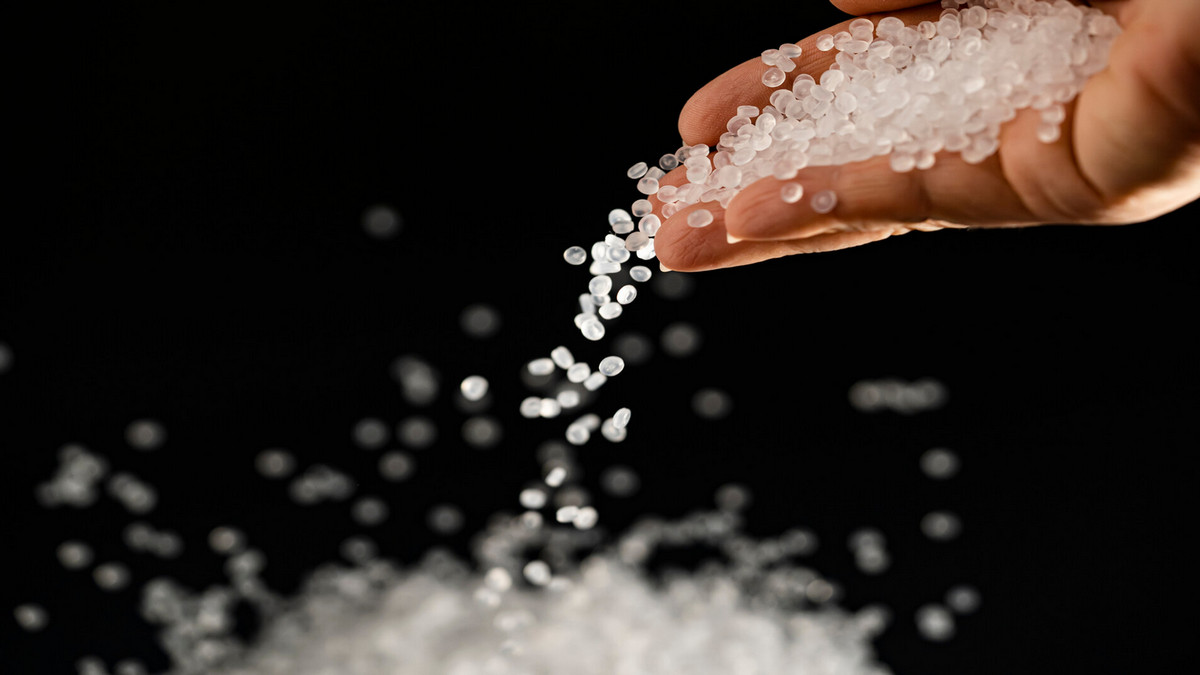With such high uncertainty and high volatility in the market environment, how can the plastics industry improve its physique? Can we respond flexibly to the ever-changing world economy?
Affected by the global environment, the plastics industry suffers from serious labor shortages, fluctuating demand, sharp fluctuations in plastic costs, repeated bullish and bearish news, and higher uncertainty in the supply chain. With such a rapidly changing market situation, companies should Only by having higher strain flexibility, can differently market strategies and capacities be quickly allocated in real-time.
Core Processes of the Plastics Industry:
- Order receiving cycle: After receiving the order, the internal process processing and review confirmation of the order need to be carried out.
- Production scheduling cycle: Material calculation and planning, is the material enough? Do you need to purchase parts? Can the availability and sequence of multiple items to be considered in the scheduling plan, such as equipment, molds, materials, colors, and on-site conditions, can smoothly allow production to proceed as scheduled?
- Material preparation cycle: After the material preparation plan, when will the material procurement be carried out? When do materials need to be put into storage and delivered to the site?
- Manufacturing cycle: Are the molds to be used immediately available so that orders and plans for projected production can run smoothly? In addition to the production status in your factory, can the outsourcing of different projects be put into storage as scheduled, so that the assembly can be completed according to the planned time? The production line will not be shut down due to a lack of materials. The production parameters of plastic injection will be critical to the quality of production. Are the parameters used correctly? Are the injection parameters recorded during production? Can the parameters be more optimized?
- Delivery cycle: After the assembly and packaging are completed, the shipment can be prepared according to the freight status.
Industry Management Challenges in the Plastics Industry:
- Equipment disorder: Mold management is not implemented, maintenance is not standardized, and the upper and lower molds are time-consuming and labor-intensive.
- Chaos in the use of materials: The management of secondary materials is random, the types of materials are complex, and the adjustment cost remains high.
- The scene is unclear: The production capacity is uneven, the production process is not transparent, and the production progress cannot be controlled immediately.
- Difficulty in coordination: Production scheduling is inaccurate, demand is not synchronized, order changes are not easy to insert and the delivery time is affected.
The Operating Environment of the Plastic Product Manufacturing Industry Has Become Harsh:
Taiwan's domestic plastic products industry is not large. In addition to providing domestic demand, export sales are Taiwan's main market. Facing the development trend of a circular economy and reducing plastic consumption, meeting the international plastic restriction requirements has become the mainstream in the future, and will also become a challenge and a new opportunity for the future development of Taiwan's plastic products industry.
As the global economy grows, the demand for new products and new applications expands. Recently, the effect of Japan's imposition of anti-dumping duties on China has boosted the growth of orders received by Taiwan's plastics industry. Looking at the trend of consumption growth for a long time, the general environment will not reduce the amount of plastic used due to the decrease in the birth rate. In recent years, plastic production has grown exponentially, and it is predicted that plastic consumption will quadruple by 2050. The instability in the Middle East and the use of US troops have caused fluctuations in oil volume. Plastic raw materials are affected by international prices, which together affect the profit of orders and quotations. It is difficult to grasp future production profits stably or accurately. The trend of environmental protection issues is hot, global plastic production and use have increased significantly, and the laws and regulations of various countries are becoming more and more stringent. It is bound to require the plastics industry to create a circular economy and reduce the consumption of plastic materials, especially reducing packaging and using recyclable materials are currently the top priority of the packaging industry.
Plastic products are one of the manufacturing industries with serious labor shortages. How to overcome the relatively limited manpower and how to operate efficiently? Because the market price has a certain market price, to avoid price wars and create an attractive advantage in the order if the actual cost is inaccurate, how can you know whether the order is profitable or not, it is more necessary to actuary costs to control costs and increase costs. Ability to achieve gross profit. With the progress of the times, technology is constantly updated, and in line with the trend of environmental protection laws and regulations, the application of new materials has begun. The automobile industry emphasizes lightweight and safety, the safety and precision of medical plastics are carefully studied, and the market development drives the needs of new product fields such as protective packaging, lightweight packaging, packaging material recycling, and decomposable packaging materials.
The Small Amount of Diverse Demand and Strict Price Competition:
From the perspective of consumer demand, the rising awareness of environmental protection, coupled with the trend of individualization, small amounts, and variety, will make the competitive environment of the plastic products industry more severe and the production cost more difficult to control. With changeable market demand, small and diverse orders, and increasingly strict product safety regulations, this is no longer the mass production of a set of molds. When the complexity of order scheduling increases, the speed and information volume of management will not keep up with production. If you want to transform into a small and diverse product field with high added value and high gross profit, to improve efficiency, reduce the number of mold changes and line changes, and efficiency will of course be a problem. However, when it uses mass production to meet the needs of a small number of diverse customers, the result is indeed high inventory, but instead of making profits, it accumulates a pile of inventory.
Product Life Cycle Accelerated Rotation:
Changes in the general environment, when companies face price competition brought about by a small amount of variety, it means that the speed of product rotation will speed up. How to grab the first wave of the market and pursuing high value-added products will test the development, design, and mold opening of enterprises. Professional and cost control ability. If you want to enter the high-margin market, you must rethink how to balance quality, price, and delivery.
The scheduling and on-site management of the plastics industry mostly stay in the mass production mode. In the face of rapidly changing market demands, small and diverse orders, and increasingly strict product safety regulations. If the speed of management and the amount of information do not correspond to the actual production situation, the on-site response will be slow. The coordination of production and sales will be complicated, and the current situation will not be grasped in place so better scheduling cannot be achieved. Production management is often under the pressure of replying to the delivery date of the order. The usual method is to directly inquire about the site, but the production capacity return is not immediate, the estimation is inaccurate, the production scheduling and manufacturing are out of order, and it is naturally difficult to plan the dispatch of labor. The production scheduling conditions are complex, and multiple batches (part number, mold, machine, color, etc.) must be met. When the production pipe is calculated with the scheduling rule in mind, it takes time to wait for the calculation result, which makes it difficult to ensure the production capacity and delivery time due to the experience of changing the mold and line of the machine. The scheduling is not optimized, resulting in on-site process congestion or idleness, and poor capacity utilization.
Full Quality and Resume Management:
When the schedule begins to enter the production line, each production line operates on its own. It is recorded in the system after waiting for the end, which leads to a serious lag of progress information, and it is impossible to grasp the progress in real-time. In addition, the mold temperature, injection pressure, and injection rate are also manually copied. After the production data is collected, it is logged into excel for resume or analysis. It is not necessarily correct, and the equipment inspection cannot determine whether it has been implemented.
Since the plastics industry emphasizes high efficiency, high quality, and continuous production with continuous production lines, when the efficiency improvement meets strict product safety requirements, on-site personnel are often required to make production records. How to reduce the time spent by on-site personnel to write records and automatically leave records, let on-site personnel focus on production, and deal with on-site problems, to improve production efficiency. Under the premise that quality and processing process traceability are increasingly required in the future, how to collect and effectively verify data more accurately is a top priority.
Coping Strategy:
It is important to use the technologies and methods of digital transformation and smart manufacturing to improve the production efficiency of the entire process and reduce unnecessary waste.
- Efficiency improvement: There is room for efficiency improvement in enterprises, and it is necessary to re-examine and adjust to improve performance efficiency, which can be done immediately.
- Innovation: In the face of the continuous renovation of laws and regulations, enterprises should increase investment in technological breakthroughs and product application innovations in the industry, so that the original niche products have a new product growth curve.
- Transformation: Plastic is not only the protagonist of the industry itself but also the supporting role of other industrial applications. It can follow the trend and develop industrial plastic products with high added value.
The Development Trend of New Plastic and Rubber Materials:
- Green – Green environmental protection:
The so-called green process at least covers: More efficient production process, more cost-effective design, and more environmentally friendly material application. It represents a commitment to saving resources, using fewer materials, less energy, and less manpower, and at the same time starting the thinking of Industry 4.0 smart manufacturing. Many biomass material applications and technologies for energy saving and carbon reduction have emerged, such as biomass material identification and analysis technology. Preparation, processing, and application of biomass composite materials and environmental protection additives. The second generation of non-food raw materials (plant fibers) modification, processing, and application technology. Energy saving technology and green energy (wind energy, solar energy application) technology, etc.
- Recycle– Recycle:
The concept of circular economy is to introduce the 6R principles of products (Reuse, Recycle, Reduce, Recovery, Repair, Redesign) to enhance the green value of products and prolong the product life cycle. It is no longer just a slogan, nor just to reduce costs, but a way of saving and cherishing blessings, for sustainability, a display of technology, and a creation of value. The mechanism and technology of recycling and reuse are booming, and the technology and application concept of environmentally friendly and low-carbon new materials (low pollution, low toxicity, and low carbon emission) have become the most important part of supporting the circular economy.
- Advance – Advance innovation:
More and more chemical material technologies are used in the development of high-end, high-value new materials, and are further integrated into more convenient designs, smarter manufacturing processes, and more advanced green energy technologies. For example, high-end elastomers that emphasize recyclability are widely used in sports and leisure, biomedical technology, and even rail vehicles. The cutting-edge fiber-reinforced composite materials that attach importance to lightweight and energy saving have been extended from the material technology originally used in aerospace defense to construction, electric vehicles, green energy technology, as well as higher-value industrial parts and livelihood products.
- Smart – Smart Design:
Looking around the world, we are surrounded by polymer materials, and people's food, clothing, housing, and transportation are inseparable from colorful polymer materials. The new material design escapes traditional thinking, and cleverly uses various molecular structures or mechanisms, so that the seemingly ordinary plastic material has wisdom. And the material can respond to various external stimuli (light, electricity, pressure, humidity, acid, alkali, etc.) to make the corresponding response.






.jpg)
.jpg)
.jpg)

.jpg)

點-m-90454917_m.jpg)

